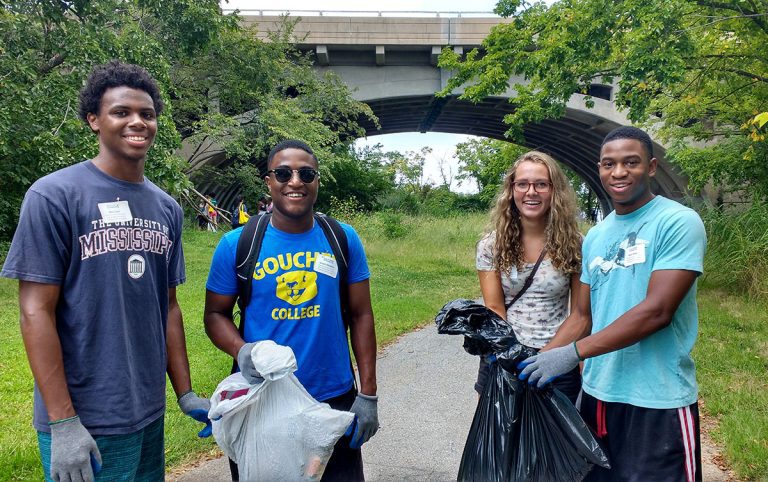Great Grasses for Native Gardens
One of the easiest ways to make your Baltimore yard a healthy and attractive place for wildlife is to increase the number and variety of native grasses you use. Thankfully, the many indigenous grasses we grow and sell at Herring Run Nursery are just as lovely to look at as they are valuable to our ecosytem.
Many butterflies, especially banded skippers and satyrs, depend on native grasses as a food source for their young. And many birds will use the seeds in fall or winter. Even fireflies depend on having stands of unmowed grass in the landscape. Fireflies are active at night, and spend their days resting on blades of grass. They are, therefore, very vulnerable to mowing if the only grasses in your yard are turf-grasses.
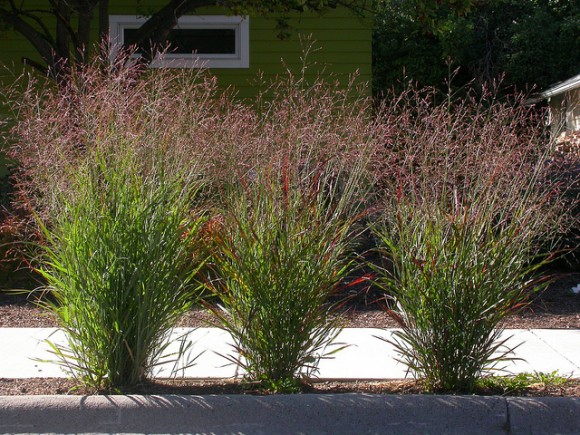
One excellent native grass for Baltimore is Panicum virgatum, or switchgrass. It is a wonderful, clump-forming perennial grass. It grows three to six feet in height, and makes a wonderful accent planting. Because of its robust root system, once established it can do very well in difficult site conditions (e.g. along a sunny, south-facing wall or foundation, even one sheltered from rain). The leaves are usually bright-green when they emerge in late spring, though some cultivars turn more red in summer (‘Shenandoah’ is one of these).

Another choice for sunnier sites is Schizachyrium scoparium, or little bluestem. It is highly attractive, especially in fall and winter, and tends to remain somewhat shorter than Panicum virgatum. It prefers sites that are on the dry side, since too much water can cause it to flop over instead of remaining erect. Some varieties, especially ‘Standing Ovation’ are much less prone to flopping.
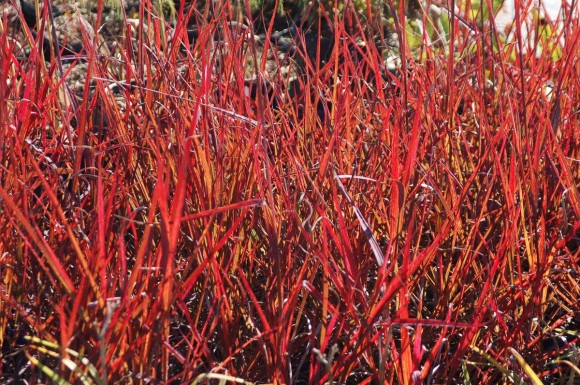
Few grasses are as dramatic as Red October big bluestem (Andropogon gerardii ‘Red October’). With a height of up to six feet, this is a real standout, but the dramatic red foliage strenghtens to burgundy in fall and finally scarlet in late fall. Even the seed-heads are red.
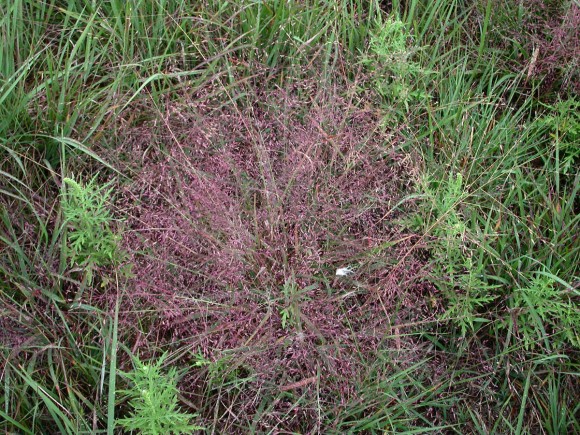
Not every garden has room for tall grasses, and two of our favorite short grasses can be stars as well. Eragrostis spectabilis (purple lovegrass) and Sporobolus heterolepis (northern dropseed) are both 12” to 18” in height at most. These grasses work fabulously well at the edge of a garden bed or meadow planting, since they will not fall into the pathway or onto the sidewalk. They also work well as a matrix planting, between taller perennials.
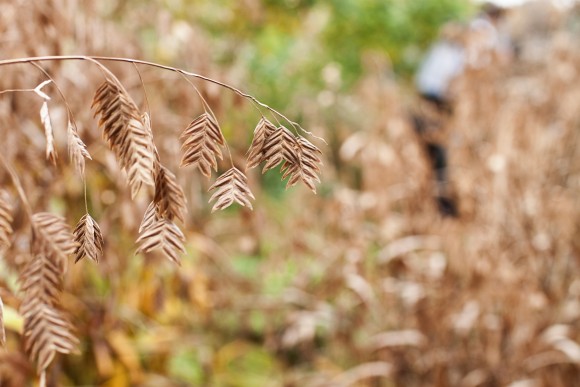
We also have several native grasses that are perfect for shadier sites. Chasmanthium latifolium, or Indian wood oats, is a favorite. It has large, arching seedheads and it can reseed readily. This makes it particularly well-suited for areas that don’t get a lot of maintenance but that you want to look attractive. It will form a fairly dense cover when established, reducing the need to weed or mulch.

Elymus virginicus, or Virginia wild rye, is another choice for shadier areas though it can also handle sunny spots too if they are not too dry. The graceful seed heads do resemble bottle-brushes.
Another important group of plants are not technically grasses but do resemble them. Plants in the genus Carex are sedges, and they are incredibly useful in Baltimore landscapes. Several popular sedges do well in dry shade, where little else will grow (especially turf grass). In contrast to the true grasses (above), which are tall enough to be planted as an accent planting or in the core of a perennial border, the sedges tend to be very low-growing. They tend to be used as an edging plant or as a ground cover.
The native grasses we offer at Herring Run Nursery can be used as ornamental accents or as backdrops to perennial beds. Increasingly, homeowners are replacing sections of their yard with meadow gardens: a mix of native grasses and perennials to act as a place for butterflies and birds to congregate.
If you have children or grandchildren, you may also find that they love hanging out in such a meadow because there is so much more going on than a bare turf lawn. The meadow garden has another virtue, in that they require cutting only once a year!


